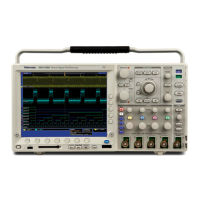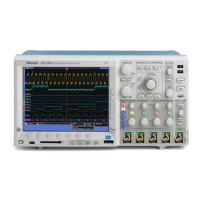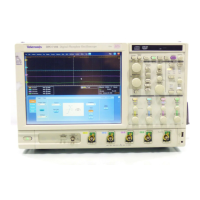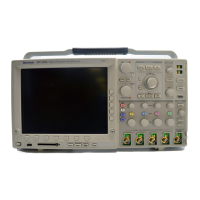
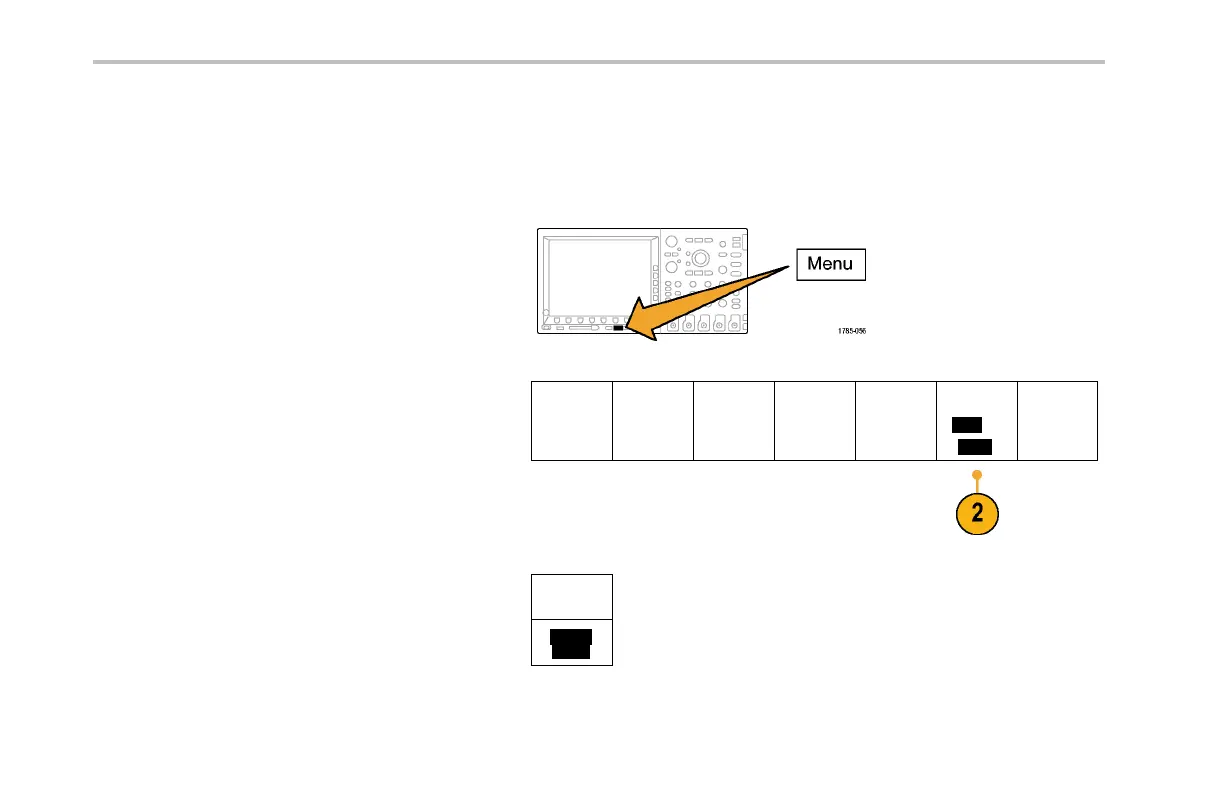




Do you have a question about the Tektronix DPO4034 and is the answer not in the manual?
| Brand | Tektronix |
|---|---|
| Model | DPO4034 |
| Category | Test Equipment |
| Language | English |
Essential safety precautions for preventing electrical hazards and fire.
Defines key terms used throughout the manual for clarity.
Unpacking and checking oscilloscope items as standard accessories.
Details on input voltage, power frequency, consumption, weight, and dimensions.
Explains how to connect Tektronix Versatile Probe Interface (TekVPI) and TPA-BNC adapters.
Instructions on grounding the oscilloscope and connecting power for operation.
Guides on connecting the oscilloscope to a PC using VISA drivers and e*Scope.
Identifies and describes the function of various front-panel connectors on the oscilloscope.
Procedures for connecting probes and setting up analog channels to acquire signals.
Explains how to modify acquisition modes, record length, and delay time settings.
Steps for setting up digital channels to acquire signals using logic probes.
Guides on selecting various trigger types like Edge, Sequence, Pulse Width, Logic, etc.
Details on trigger conditions for Edge, Sequence, and Pulse Width trigger types.
Information on setting up oscilloscope triggers for various serial and parallel bus protocols.
Procedures for starting and stopping waveform acquisition using Run/Stop or Single.
Options for adjusting waveform display style, persistence, and XY display modes.
Configuring input coupling, impedance, bandwidth, and probe parameters for signal acquisition.
How to adjust the display of digital channels, including scaling, positioning, and grouping.
Explanation of how digital channel data is displayed, including color coding and transitions.
Procedures for performing automated measurements like frequency and peak-to-peak amplitude.
Using on-screen cursors to take manual measurements on acquired waveform data.
Features of Wave Inspector for efficient handling of long record length waveforms, including zoom and pan.
Steps to save the oscilloscope screen as a graphical image file.
Procedures for saving current waveform data or recalling stored waveform data.
How to save and recall instrument setup configurations, including acquisition and trigger settings.
Instructions for printing oscilloscope screen images to a connected printer.
Procedure to securely erase all setup and waveform data from the oscilloscope memory.
Demonstrates measuring signal amplitude and frequency in a basic circuit.
Techniques for analyzing noisy signals to reveal underlying detail, using Peak Detect.
Setting up the oscilloscope for single-shot acquisition to capture transient events like relay contacts.
Using the oscilloscope to monitor and analyze parallel bus signals for troubleshooting.
Analyzing RS-232 bus signals for signal integrity and decoding data into ASCII characters.


